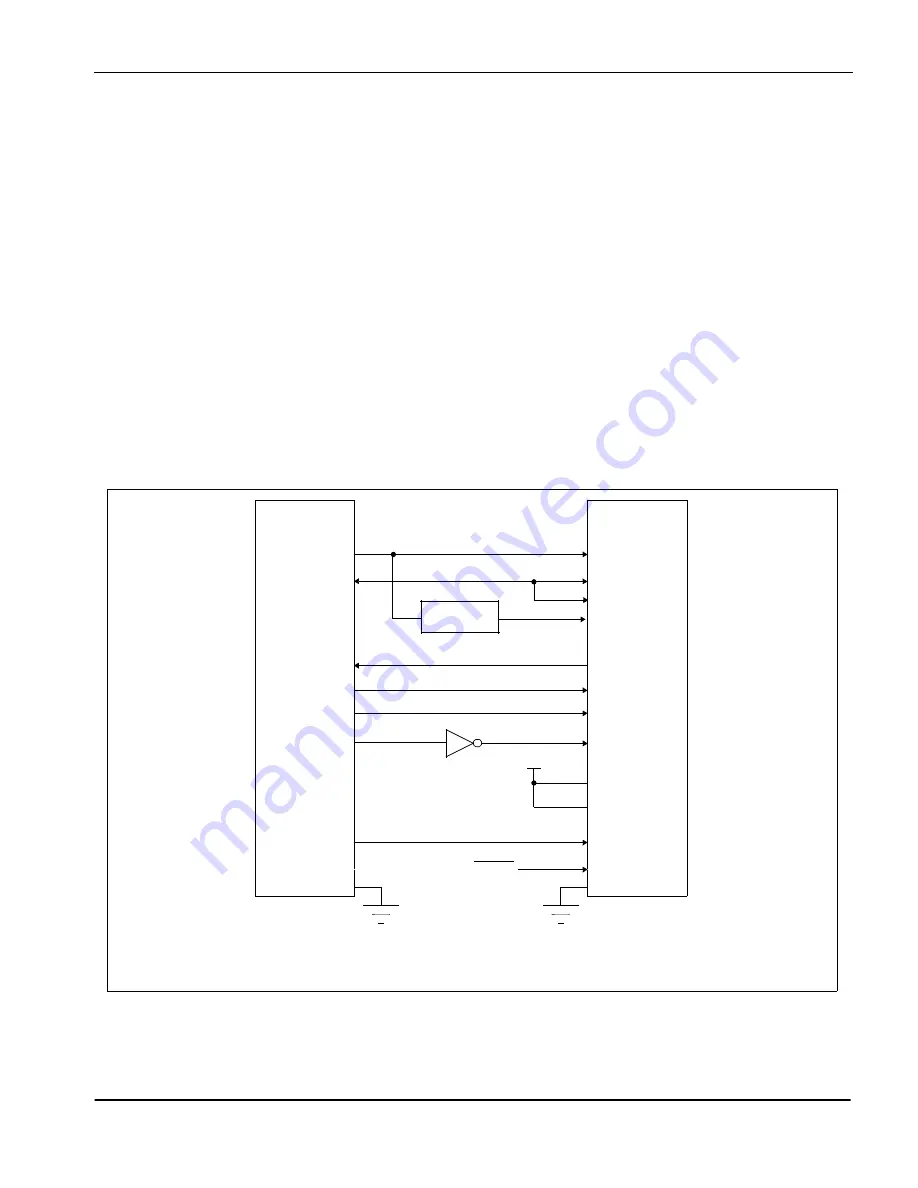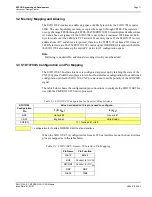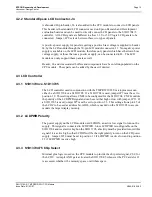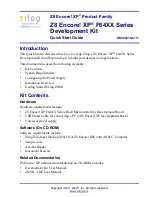
Epson Research and Development
Page 11
Vancouver Design Center
Interfacing to an 8-bit Processor
S1D13704
Issue Date: 01/02/12
X26A-G-013-02
4 8-Bit Processor to S1D13704 Interface
4.1 Hardware Description
The interface between the S1D13704 and an 8-bit processor requires minimal glue logic. A
decoder is used to generate the chip select for the S1D13704 based on where the S1D13704
is mapped into memory. Alternatively, if the processor supports a chip select module, it can
be programmed to generate a chip select for the S1D13704 without the need of an address
decoder.
An inverter inverts A0 to generate the Byte High Enable signal for the S1D13704. If the
8-bit host interface has an active high WAIT signal, it must be inverted as well.
In order to support an 8-bit microprocessor with a 16-bit peripheral, the low and high order
bytes of the data bus must be connected together. The following diagram shows a typical
implementation of an 8-bit processor to S1D13704 interface.
Figure 4-1: Typical Implementation of an 8-bit Processor to the S1D13704 Generic #2 Interface
Generic 8-bit Bus
S1D13704
A[15:0]
D[7:0]
Decoder
WAIT#
WE#
RD#
A0
BUSCLK
AB[15:0]
DB[7:0]
CS#
WAIT#
WE0#
RD#
RD/WR#
BUSCLK
RESET#
DB[15:8]
IO V
DD
BS#
BHE# (WE1#)
System RESET
Note:
When connecting the S1D13704 RESET# pin, the system designer should be aware of all
conditions that may reset the S1D13704 (e.g. CPU reset can be asserted during wake-up
from power-down modes, or during debug states).
*






































